
Dedication and Acknowledgments
My special thanks goes to my wife, Eileen Cowell, for her superb editing and support throughout this project. I want to thank my editor at Crown Publishers, Sharon Squibb, for her many excellent suggestions and guidance. I appreciate Sprints help in developing the concept of telebonding. I owe my agent, Sheree Bykofsky, a debt of gratitude for her hard work and skill in negotiating this book contract. I also want to thank my family, my friends, and office cat Sophie for their continued enthusiasm and inspiration. Finally, I dedicate this book to every shy person motivated to improve his or her ability to communicate.

Contents

Introduction
Shynessthe bane of your existencerears its ugly head yet once again! Perhaps it is when a friend at work says, Were having a party next weekend. Would you like to come? Or maybe your stomach fills with knots when your boss chooses you to make a stand-up presentation at a meeting. Or a sudden case of dry mouth twists your tongue into a pretzel during a job interview and then you miss a golden networking opportunity
If you consider yourself shy, you are not alone. Studies show that more than 75 percent of adults characterize themselves as shy in one or more social and business situations. In fact, many people are not just shy about public speaking, but are terrified to enter a roomful of strangers, meet new people, and start conversations.
How This Book Can Help You
Talking with Confidence for the Painfully Shy is a book about speaking in public. It presents proven techniques that I have taught to thousands of shy peopleprofessionals, students, singles, and coupleswho have attended my conversation workshops since 1980. I know these communication skills work because I personally use them in every social and business conversation I encounter. Based on the hundreds of letters I have received from past students and readers, I know these tried and true skills can help even the most reluctant communicator become more open and talkative.
As you master the skills in this book, you will conquer the butterflies you feel in your stomach every time you meet and talk to others in social and business situations. This hands-on guide provides the communication tools for getting past your shyness and building the confidence you need to talk with poise and power. Each chapter shows you how to overcome nervousness, fear of rejection, and even potential hostility when talking in small and large groups. Easy-to-follow examples and exercises demonstrate dozens of surefire communication skills, tips, and techniques. The primary objective of this book is to help you conquer shyness and talk confidently in every social and business situation.
How to Use This Book
I have divided Talking with Confidence for the Painfully Shy into three parts: Kicking the Shyness Habit, Speaking in Social Situations, and Speaking in Business Situations. You can start at the beginning and read all the way through to the end or choose a specific chapter that addresses your particular need. Part One, Kicking the Shyness Habit, focuses on getting over what has probably been a lifelong problemchronic shyness. In three short chapters youll learn how to break the shyness habit by changing the way you talk to yourself, sharing your expertise and interests, and showing your sense of humor.
Part Two, Speaking in Social Situations, focuses on informal social situations in which you can interact and express yourself more effectively. In six concise chapters youll learn how to master small talk, mingle at parties, host a get-together, extricate yourself from uncomfortable conversations, present toasts, and even build relationships on the telephone.
Part Three, Speaking in Business Situations, concentrates on communicating with clarity and assurance in more formal business environments. In these ten jam-packed chapters youll learn how to interview for a new job, conduct a meeting, present a speech, soft-sell, negotiate, deal with difficult clients, facilitate a training session, talk business over meals, network at conventions, and even make business contacts on airplanes!
Getting Started
Some shy people have told me that they feel less inhibited in business situations than in social situations because in business everyone knows what to expect from one another. Its the small talk and mingling at parties that drives them to distraction. Others say that social situations are easier to cope with because of more relaxed rules of etiquette. Whether you are nervous and inhibited in social or business situations, remember that you can learn to relax and be more outgoing. If you are ready to change your life, then just turn the page and start learning how to break the shyness habit. It will surprise you how easily you can master these skills and get what you want out of life simply by Talking with Confidence!
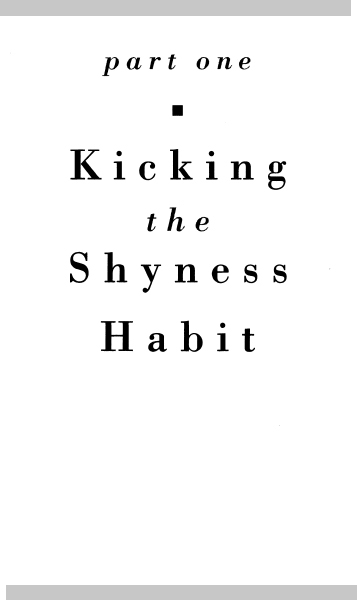
1

Changing the Way You Talk to Yourself
The tongue is the rudder of our ship.
PROVERB
In this chapter youll learn how to:
Break a pattern of shy behavior.
Transform inhibiting self-talk into confidence-building statements.
Practice constructive self-talk.
Be more approachable.
Mark Twain was considered one of Americas wittiest writers and lecturers, but when it came to talking, even he didnt always know what to say. During a long-awaited meeting with General Ulysses S. Grant, Twain found himself at a loss for words. Grant, who was known for his unemotional demeanor, simply sat with an unsmiling face and waited for the countrys most popular author to say somethingfunny or otherwise. As the silent seconds passed, Mark Twains discomfort grew. Then inspiration struck and the comic genius said, General, I seem to be a little embarrassed. Are you?
Everyone has embarrassing moments at one time or another. Think of how you feel when you meet a new person in a social or business situation. Do you get uncomfortable, tongue-tied, and nervous? Do your palms sweat and do you blush, giggle, or say ridiculous things? Is it pure agony to make small talk and carry on a conversation? Are you afraid of sounding foolish or offending the other person? Do you want to escape from the situation as quickly as possible? If responses such as these occur on a regular basis when you meet people, then you probably describe yourself as shy.


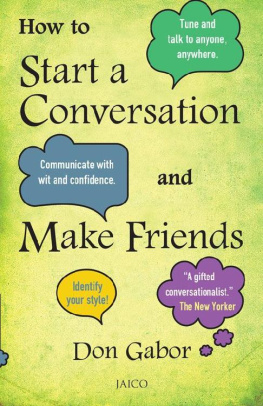

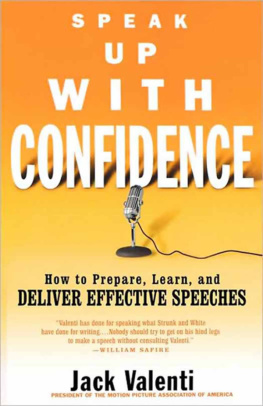



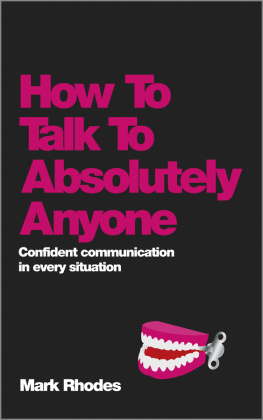




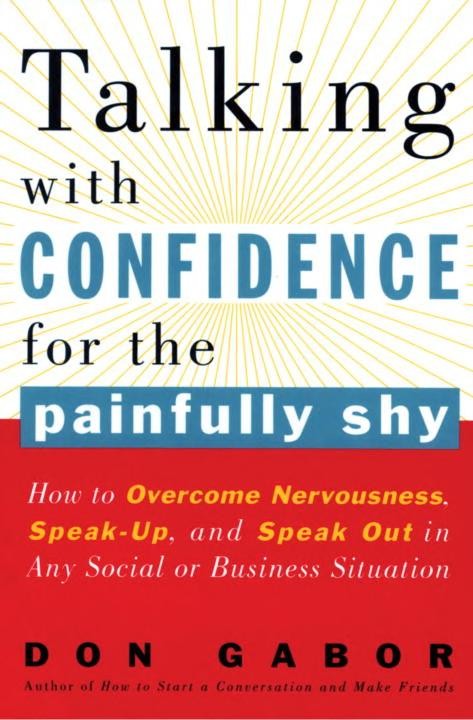

 Dedication and Acknowledgments
Dedication and Acknowledgments